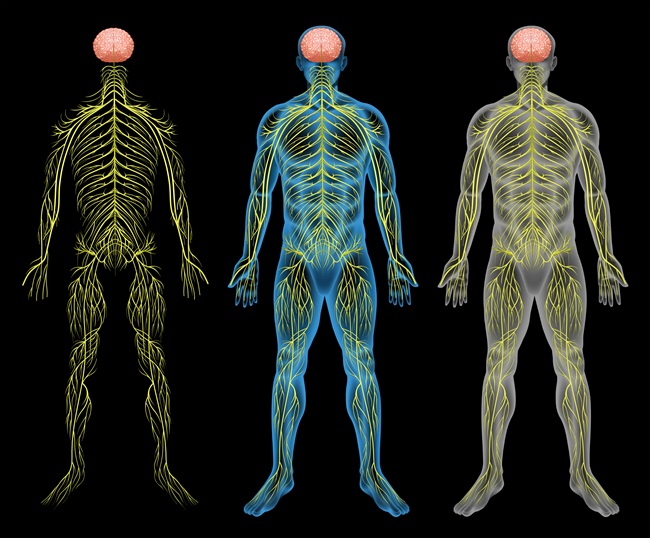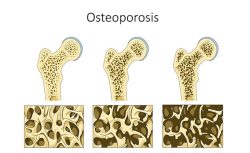Unexplained or Medically Induced Chronic Illness?
Unexplained. That’s what doctors call chronic illness. Conventional medicine says, ‘learn to live with it.’ Rather than offer a true treatment or cure for these debilitating conditions, they suppress the immune system and offer more drugs for depression and anxiety – none of which are effective. I’m here to tell you that common wisdom is wrong. I know, because my own lucky story proves we can heal from chronic illness. Pharmaceutical insults created my disabling illnesses – Chronic Fatigue, Fibromyalgia, estrogen dominance, adrenal fatigue, POTS, Graves’ Disease, Hashimoto’s, Bell’s Palsy, infertility and more. I share my journey to offer hope. The doctors were wrong. I have recovered and am once again, healthy.
Early Clues and Pharmaceutical Insults
My childhood had some clues – things I now know predict chronic illness. My lymph glands swelled when I was otherwise healthy. Mosquito bites turned into angry 3” welts. Childhood bunions and hyper-mobile joints suggested leaky gut. All these issues correlate with chronic illness and, seen in hindsight, hint at the difficulties that awaited me in adulthood.
My immune system may have been awry from the start, but pharmaceuticals tipped the scale toward chronic illness. As a teen, I took birth control pills for heavy periods and cramps. When vague symptoms appeared in my early twenties, I asked about pill side effects. The gynecologist laughed at the idea, but I trusted my gut and finally stopped the pill. I felt better in some ways but developed new symptoms. Sleep became difficult. I was hypersensitive to noise and light and struggled with unquenchable thirst. The doctor suggested my extreme thirst stemmed from hot weather and salty foods. This explanation didn’t add up to me, but I was young and so was the internet. I had no resources to connect the dots. Today, I recognize that 10 years of hormonal birth control created nutrient deficiencies (folic acid, vitamins B2, B6, B12, C, and E, along with magnesium, selenium and zinc) while also raising my risk for future autoimmune disease.
Recurrent UTIs, Fluoroquinolones, and New Onset Graves’ Disease
A few years later, recurrent urinary tract infections led to many doses of the fluoroquinolone antibiotic, Cipro. Cipro now carries a black box warning and is known to induce mitochondrial damage. My mid twenties also brought pre and post-menstrual spotting and bleeding for 10 days each month. Doctors did nothing for my hormonal imbalance but diagnosed Graves’ disease (hyperthyroidism). Everything about me sped up. Food went right through my system. I was moody. My mind was manic at times. I was unable to rest and yet physically exhausted from a constantly racing heart.
The doctor said Graves’ disease was easy – just destroy the thyroid and take hormone replacement pills for the rest of my life. I didn’t have a medical degree, but this treatment (RAI, radiation to kill the thyroid) just didn’t make sense. Graves’ disease is not thyroid disease. It is autoimmune dysfunction, where antibodies overstimulate a helpless thyroid.
As I studied my options, I learned that RAI could exacerbate autoimmune illness and many patients feel worse after treatment. It was surprising to find that the US was the only Western country to recommend RAI for women of childbearing age. Armed with this knowledge, I declined RAI and opted for medication. The endocrinologist mocked my decision. I was in my 20s and standing up to him was hard, but it marked a turning point and spurred me to take responsibility for my own health, rather than blindly trusting doctors. Recent reports suggest RAI treatment increases future cancer risks. My Graves’ disease eventually stabilized on medication, although I never felt really well. I pushed for answers for my continued illness, but doctors refused to test my sex or adrenal hormones.
IVF and More Damage to My Health
Things turned south again when I was unable to conceive. The supposed best fertility clinic in Washington, DC could not find a cause for my infertility. I’ll save that story for another day, but the short version involved a few years of torment and four failed IVF attempts. The fertility drugs and the stress worsened my overall health considerably.
Our last try at pregnancy was with a specialist who practiced functional medicine. Labs and charting uncovered a clear progesterone imbalance, and also explained my spotting. This simple diagnosis was completely missed by the conventional fertility clinic. A brief trial of progesterone cream resulted in two naturally conceived, healthy pregnancies. Isn’t it remarkable that several years and over $100,000 failed to produce a baby with IVF and $20 of progesterone cream on my wrist did the trick? This could be a cautionary tale about profit motive in modern medicine, but that, too, is a topic for another day.
Years of Conventional Medicine: Thyroid Damage, Autonomic Dysfunction, and Profound Fatigue
I weaned off thyroid medications and felt fairly well after my babies, but my system took a big hit when life brought an international relocation. The move was intensely stressful and my health sunk after we landed half a world away. I had no energy, gained weight, and lived in a fog. The tropical heat and humidity of Southeast Asia felt like a personalized form of torture.
Perhaps the stress of our move left me vulnerable to the reappearance of autoimmune and adrenal dysfunction, as my next diagnosis was Hashimoto’s Disease and adrenal fatigue. Doctors ordered functional medicine tests (hair, organic acids, stool, saliva cortisol and hormones) that identified nutrient imbalances, but their treatment ideas fell short. Despite replacement hormones and supplements by the handful, I remained very sick, with profound exhaustion, brain fog, sleep disruption, pain, and terribly imbalanced sex hormones.
Taking Matters Into My Own Hands
If setbacks have a bright side, it is in the drive to get better. I started studying when my doctors ran out of ideas to treat my illness. Fibromyalgia was the best description of my pain, but I knew conventional medicine offered no help for this condition. I dug into the topic and found the work of Dr. John C. Lowe, who used T3 thyroid hormone for fibromyalgia, and Paul Robinson, creator of CT3M, the circadian method for using T3. CT3M and high daily dose of progesterone cream improved my quality of life in the short term. Near daily bleeding eventually regulated back into a normal cycle and my adrenal function improved greatly.
Postural Orthostatic Tachycardia Syndrome (POTS) was the next bump, bringing a very high heart rate, very low blood pressure, heat intolerance, and extreme sweating on the lightest activity. By this time, I didn’t even ask the doctor for help. My research pointed to salt and potassium, and so I drank the adrenal cocktail and salt water daily. POTS symptoms vanished quickly with this easy strategy, as did the nocturnal polyuria that plagued me for many years.
I steadied after this time. I was not well but functional, despite some major life stressors, including another international move and a child’s health crisis. Even though I managed the daily basics, things like house guests, travel, or anything physically taxing required several days to a week of recuperation.
The Next Step: Addressing Nutrient Deficiencies
The next step in my recovery came thanks to a B12 protocol that includes co-factor nutrients, developed by Dr. Gregory Russell-Jones. Addressing the deficiencies connected to B12 helped and things progressed well until I had a disastrous reaction after eating mussels, which I hoped would raise iron levels. I vomited for hours and stayed in bed for days. I kept up the B12 protocol, but just couldn’t recover. Largely bedridden, and napping 4 hours at a stretch, I got up in the evening only to drive to a restaurant dinner, too exhausted to prepare food or deal with dishes.
Debilitating exhaustion lasted for a month, and then two, with no relief. It was an awful time, but hitting rock bottom proved a blessing in disguise, as desperation turned me back to research. Slowly, I pushed through brain fog and started to review studies on chronic fatigue and fibromyalgia. This led me to a promising Italian study using thiamine for these conditions.
Studying thiamine, it seemed plausible that the allergic reaction to mussels drained my B1 reserves, making it impossible to recover. Inspired by the research, I started on plain B1 at very high doses. To my surprise, I felt better right away. The first dose boosted my energy and mental clarity.
I continued to learn about B1’s benefits, thanks to this website and the text by Drs. Marrs and Lonsdale. Two weeks went by and thiamine HCL seemed less effective, so I switched to lipothiamine and allithiamine, the forms recommended in Thiamine Deficiency Disease, Dysautonomia, and High Calorie Malnutrition. WOW. What a difference! Virtually overnight, my gears began to turn, and I felt better with each new day. In a single month, I went from bedridden to functioning well 2 out of every 3 days. I had ideas, I had energy, and I could DO things. The setback days were mild and disappeared entirely after 2 months on thiamine.
At the 2 month mark, I had to travel for a family emergency. My pre-thiamine self would have needed at least a week of rest following this kind of trip, and I expected pain and fatigue as I stepped off the plane. But to my great surprise, I felt well! I remember walking through the airport late that evening and thinking it felt amazing to stretch my legs. Maybe that sounds like an ordinary feeling, but years of chronic fatigue and fibromyalgia conditioned my body to stop, to sit, whenever possible. It was entirely novel to FEEL GOOD while moving! The next day came and I did not collapse, I did not require days to recover and was able to carry on like a normal person. It was a remarkable change in an unbelievably short time.
Recovery From Conventional Medicine’s Ills Came Down to Thiamine
Getting better feels miraculous, but it’s not. The real credit for my recovery goes to experts like Dr. Marrs and Dr. Lonsdale who spread the word about thiamine. Despite years of illness and dead ends, I believed I could heal and I kept trying. Tenacity eventually paid off when posts on this site helped connect the dots between my symptoms and thiamine deficiency. More than anything, my recovery is a story of tremendous luck, as I finally landed upon the single nutrient my body needed most.
The difference between my “before thiamine” and “after thiamine” self is beyond what I can describe. Birth control, Cipro, and Lupron created nutrient imbalances and damaged my mitochondria, leading to multiple forms of chronic illness in the years between my 20s and 40s. Replacing thiamine made recovery possible by providing the fuel my damaged cells so badly needed. At this writing, I am 7 months into high dose thiamine and continue to improve. I have not experienced any form of setback, regardless the stressors. My energy feels close to normal, the pain is resolving, and brain fog is a thing of the past. My sense of humor, creativity and mental functioning are all on the upswing. I owe thanks to the real scientists who dare to challenge wrong-headed ideas of conventional medicine, and who provide hope for these so-called hopeless conditions. My wish is that this story will do the same for someone else.
Share Your Story
If you have a health experience you would like to share, send us a note here.
We Need Your Help
More people than ever are reading Hormones Matter, a testament to the need for independent voices in health and medicine. We are not funded and accept limited advertising. Unlike many health sites, we don’t force you to purchase a subscription. We believe health information should be open to all. If you read Hormones Matter, like it, please help support it. Contribute now.
Yes, I would like to support Hormones Matter.
Image by StockSnap from Pixabay.
This article was published originally on February 6, 2020.







































